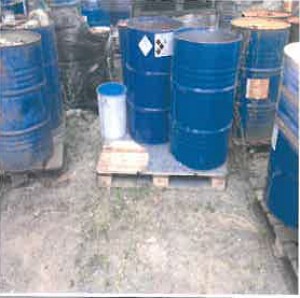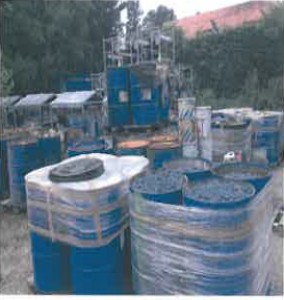On a Sunday morning, at around 8 a.m., in the parking lot of a company manufacturing metal structures, a passer-by noticed white smoke coming from an open 200-litre drum labelled as containing toxic products (isocyanate) and raised the alarm. Several other sealed drums were stored nearby. The firefighters established up a security perimeter. The owner was not available at the time, but an employee arriving at the site indicated that the drum, contrary to its labelling, actually contained paint residue and cardboard. The barrel had reached a temperature of 230 °C, and the fire brigade began spraying it down with water. As the explosimetry and toxicological measurements were negative, the drum was left in place on its pallet.
The start of the fire was caused by a self-ignition phenomenon triggered by the paint residues contained in the drum and heat. The presence of cardboard boxes in the drum favoured the combustion phenomenon. Several malfunctions were highlighted by the inspection services:
- storage of a large number of drums containing waste without a lid or in a retention area;
- unlabelled or mislabelled drums;
- mixing of paint residues in the drums that present a risk of self-ignition with combustible products such as cardboard, due to the influence of heat;
- no fencing around the site increasing the risk of intrusion;
An emergency measures order was issued requiring the operator to dispose of the waste and clean up the waste storage area.





